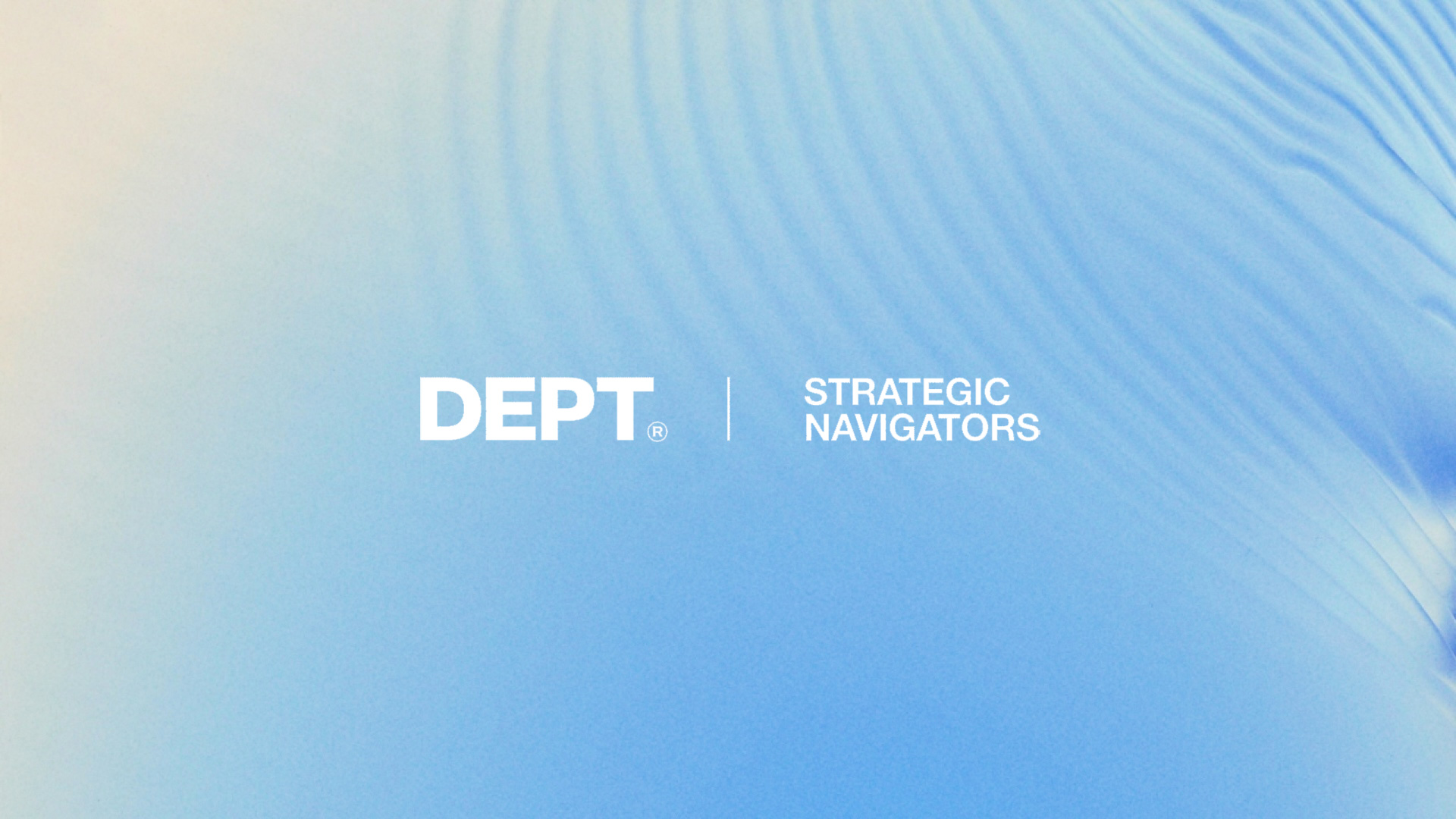Beyond the firefight: Turning potential tariff disruption into long-term marketing opportunity

The global economy is rarely a smooth ride.
But the recent wave of US tariffs has thrown a particularly sharp curveball at international brands. Digiday recently reported that agencies like DEPT® are acting as “policy translators” for our clients, navigating a complex web of shifting regulations and economic uncertainty.
The immediate impact is clear: squeezed margins, rising costs, and disrupted supply chains. But for forward-thinking brands, this disruption presents a unique opportunity. It’s a chance to not only adapt but to fundamentally transform marketing strategies for long-term advantage.
DEPT®’s Strategic Navigators: A think tank for transformation
These tariffs aren’t just a finance or supply chain problem; they’re a core marketing challenge. That’s why we’ve quickly spun up a global Strategic Navigators think tank—a dedicated team of strategists spanning technology, marketing, and AI.
“Unlike past macroeconomic crises, this one put marketers at the center. The ripple effects hit every part of their remit: media budgets, pricing models, procurement timelines. The usual buffers between policy and marketing disappeared overnight. So DEPT® adapted. Less about campaigns, more about contingency.
A team of Trump policy interpreters helping clients contort their way through the chaos. They’re working along two tracks: with marketers based in the U.S. and with those outside it looking to sell into the country—each facing a different set of questions and a shared sense of uncertainty. ” – Seb Joseph and Krystal Scanlon, Digiday
Our mission is simple: to provide our clients with the strategic guidance and practical tools they need to not just react to these challenges, but to proactively reshape their marketing for a more resilient future. This involves a shift in mindset, moving beyond short-term fixes to embrace long-term strategic advantages.
How brands can start turning disruption into opportunity
Through our early Strategic Navigator conversations with our top clients, we’ve consistently heard several urgent marketing challenges brands are facing, and what forward-thinking marketing leaders are doing to lead through them. Here are our early thoughts on where brands can turn tariff-driven disruption into long-term strategic advantage:
1. When prices go up, trust is on the line
The challenge: With rising costs being passed to customers, brands must walk a fine line: How do you communicate price increases without eroding brand trust or losing share? Especially if there are viable alternatives for consumers to choose from.
The opportunity: Shift your messaging to emphasise value, quality, or smart savings. Maybe even around buying in bulk right now. Reframe your narrative and meet your customers where they are. Right now.
For example, Chipotle’s CEO, Scott Boatwright, recently said that the fast food chain intends to absorb the impact of the tariffs and keep its prices as is so it can stay the course on “delivering extraordinary value to the consumer.” While this may not be an option for every brand, it’s important to be as transparent as possible in this moment and connect your messaging to your larger brand story. The brands doing this well create preference, not just permission, showing consumers that higher cost reflects a higher purpose or better return.
2. When what you’re promoting isn’t in stock
The challenge: When tariffs cause stockouts or reduce the variety of products available, marketing gets hit. If you’re promoting products that aren’t in stock, it leads to wasted spend and customer frustration.
The opportunity: Build dynamic content frameworks, integrate with inventory systems, and stay nimble with paid media targeting. This isn’t just an efficiency play — it’s about brand integrity. Inconsistent availability paired with static messaging can make your brand seem out of touch or unresponsive.
As we’ve done in our work with Foot Locker, AI-powered solutions can uncover your products that will drive the healthiest revenues and help you prioritise where to invest (and pull back).
3. Squeezed budgets, higher expectations
The challenge: With rising costs in operations, marketing budgets are under pressure, but expectations haven’t gone down. Marketers need to do more with less, with fewer resources.
The opportunity: Smarter audience targeting, modular creative, and performance-driven media planning to stretch every dollar further. In short, use AI to drive your personalised content solution.
We work with eBay to leverage our creative automation tools and create multiple cross-channel messages and creative variations for various eBay audiences. Automated asset production allows us to tailor messaging to each customer segment and iterate on the messaging quickly based on performance data. We create over 200 monthly campaigns in multiple languages that convey their unique brand voice and articulate their values consistently to millions of people around the world.
4. Price-sensitive, values-driven: Today’s consumer is both
The challenge: Consumers will be more price-conscious – that’s a fact. But they are also increasingly values-driven. Decisions made now will impact their choices in the long term. They’re watching how brands react to pricing shifts and whether the brand’s messaging still aligns with their reality.
The opportunity: Use real-time data, social listening, and testing to keep a pulse on sentiment and pivot messaging quickly. Do it Daily. Adjust and use your content updates for better outcomes.
5. Thriving in uncertainty
The challenge: Tariff changes can come fast, disrupting even the best-laid quarterly plans.
Brands that rely on long lead-time content or seasonal planning are at risk of being caught off guard.
The opportunity: Build agile marketing workflows with room to adjust timing, creative, and spend media allocation, and do it daily. If your agency can’t do it, find one that can.
A call to action
The tariff situation is undoubtedly challenging. But it’s also a catalyst for innovation. Brands that embrace agility, leverage data and technology, and prioritise long-term strategic thinking will not only weather this storm but also emerge stronger and more resilient.
“DEPT®’s global chief client officer and growth officer, Andrew Dimitriou, called the situation the next ‘COVID moment,’ noting that just as digital transformation advanced in the marketing world during that time, the tariffs will spark an AI and technology boom in the industry.
‘When we have crisis moments, acceleration happens,’ Dimitriou said. ‘This is our acceleration moment as it comes to AI and marketing.'” – Brian Bonilla, Ad Age
This is precisely the opportunity at hand: to reframe marketing from a cost centre to a strategic driver of long-term growth and profitability.



